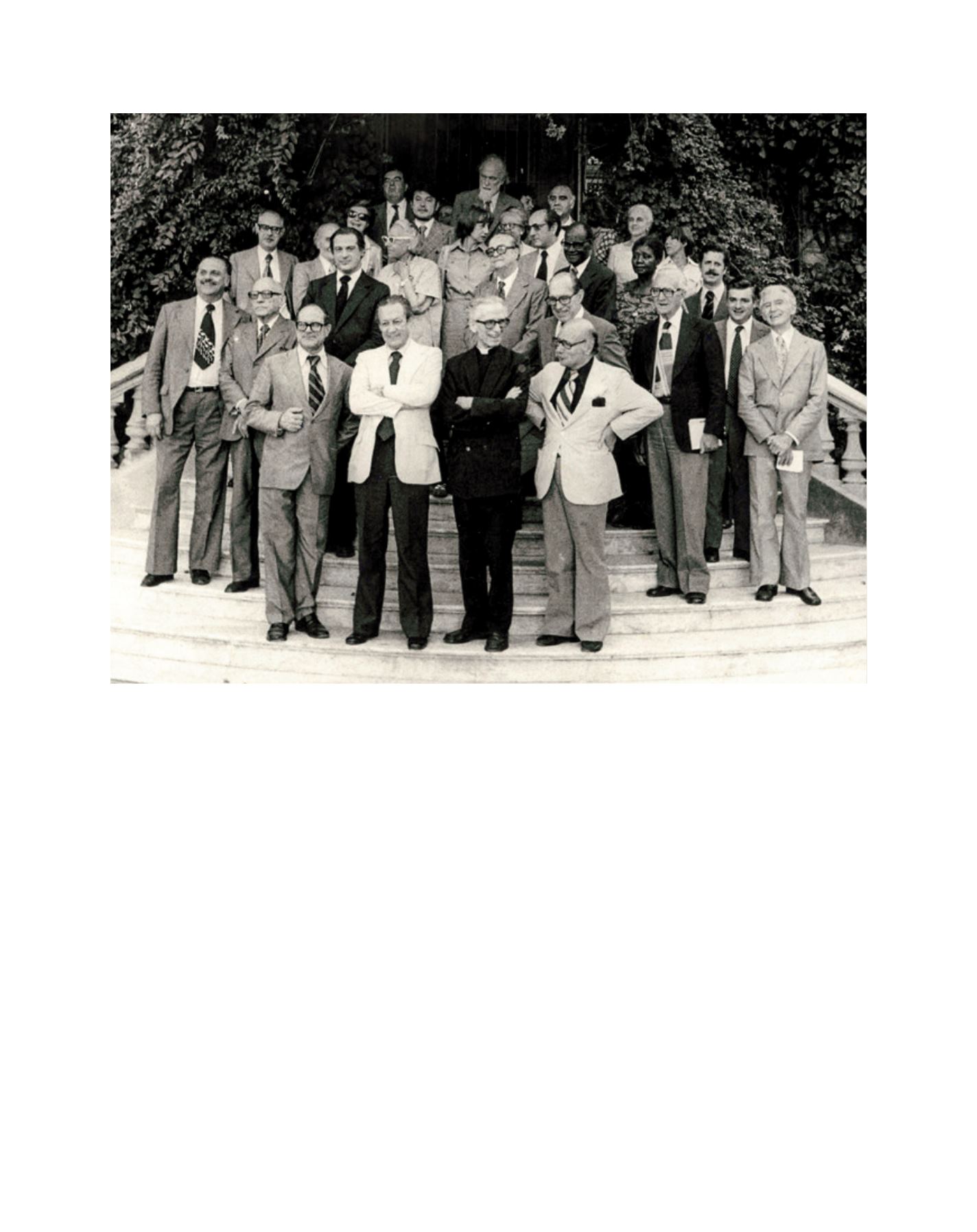

[
] 117
Image: © UNESCO Villa Ocampo
Participants in the Colloquium on the Dialogue among Cultures in 1977, the first activity organized by UNESCO at Villa Ocampo
The basic outline of the new Villa Ocampo Programme
will be carried out by relating UNESCO’s own specializations
and the broad-ranging intellectual and cultural legacy left by
Victoria Ocampo. Within the framework of this new scenario,
projects are being planned to promote support, exchange and
training aimed at governments and civil society in the coun-
tries of the sub-region.
Among the above-mentioned proposals, Colmenar is an
exchange and reflection project geared to converting Villa
Ocampo into a laboratory for ideas that will anticipate
emerging trends with the ability to formulate forecasts and
recommendations in the field of culture. “I see Villa Ocampo
as a place of our own and of those who come with valuable
contributions,” wrote Victoria Ocampo.
For its part, Ombú will be aimed at strengthening capaci-
ties and work with reference indicators in the field of culture
and intercultural dialogue. Through the promotion of train-
ing courses, the preparation of new approaches to complex
regional challenges regarding heritage and cultural diversity
will be encouraged. “I believe in education and that all must
be given equal opportunities,” wrote Victoria Ocampo. “There
are those who will take advantage of them and those who
won’t (this is another matter). In this way all that will be
left among men will be real and insurmountable differences.
Because men are different and have different aptitudes. Even
leaves on the same branch are different.”
Finally, one of Victoria Ocampo’s essential features was her
capacity to stimulate the development of a creative vocation
among those around her and to promote dialogue and inter-
action between cultures. This dual purpose was one of the
reasons that encouraged her to found
Sur
magazine in 1931
and, as she herself said, “our magazine and our publishing
house have made known a great number of writers from all
the countries… But
Sur
has attempted not only to introduce
in South America the best of the world’s liberal arts. It has
attempted to take a reverse path. That is to say, to take our
culture to the world… With perseverance, it has contributed
to making known what is outstanding in Argentina.”
Through the Pilares project and inspired by the work of Victoria
Ocampo, access by underprivileged groups to cultural produc-
tion will be supported. Pilares may include a series of incentives
(grants and competitions) towards this goal, thus increasing these
groups or people’s creative and management capacities, seeking
to propitiate a culture of peace and non-violence.
All these projects will integrate gender issues as a cross-
cutting theme for intercultural dialogue and as a concrete
A
gree
to
D
iffer

















